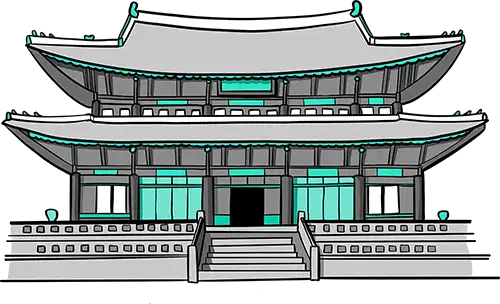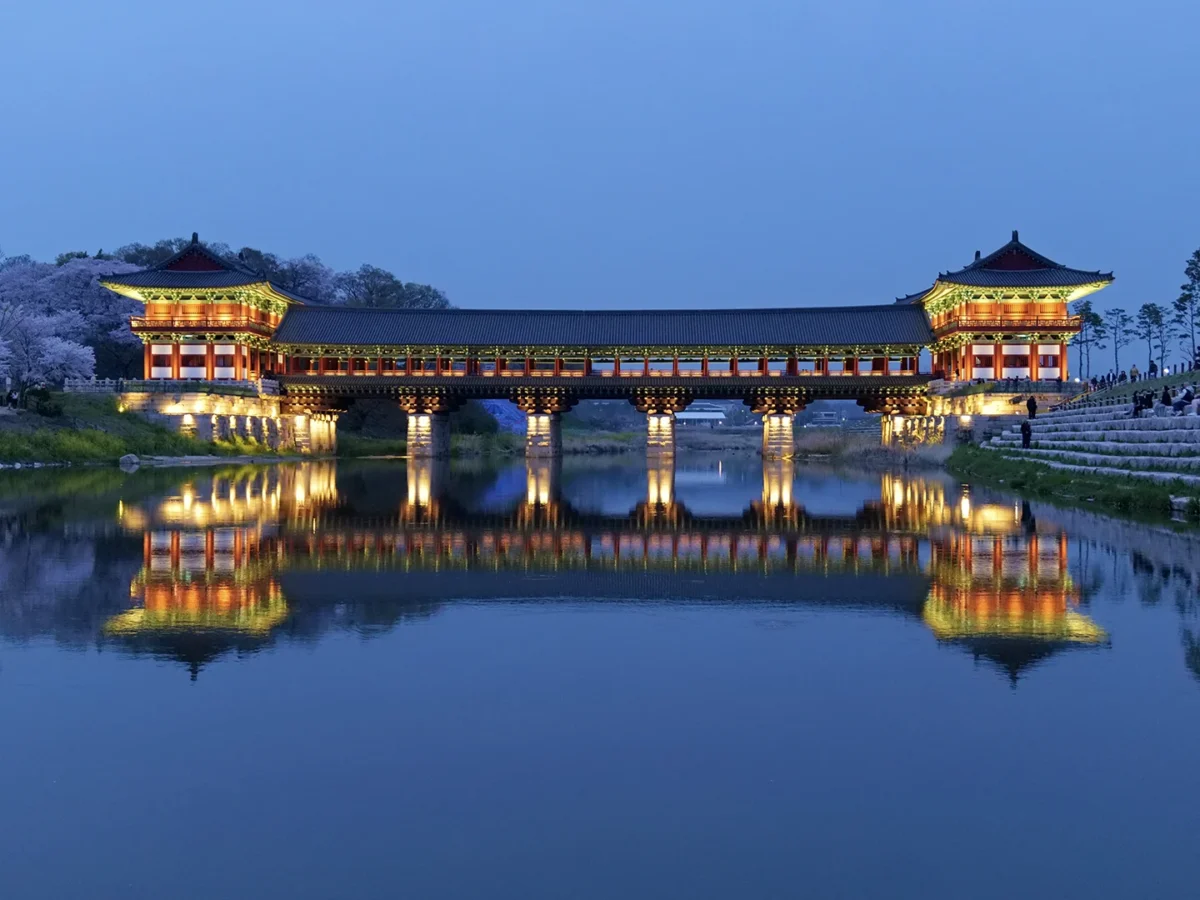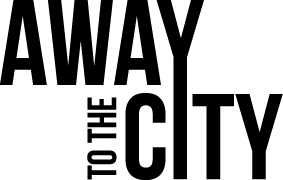20 Fun Facts About Seoul That Will Surprise You
Think you know Seoul? South Korea’s capital city is full of surprises! Whether you’re planning a visit or just curious, these fun facts will give you a deeper look at its rich history and culture.

With over 10 million residents, Seoul (서울) blends centuries-old palaces with cutting-edge skyscrapers. The city’s delicious cuisine, traditions, and the Korean wave of drama, music, and beauty have made a global impact.
After exploring Seoul multiple times (and watching more K-dramas than we’d like to admit), we’re excited to share 20 fascinating fun facts that might surprise you – and maybe even inspire your next trip!
This post may contain affiliate links, including from Amazon and other trusted partners. If you click a link and make a purchase, we may earn a small commission at no extra cost to you. That said, we only recommend products and services we genuinely use and love. Learn more in our Privacy Policy page.
1. Seoul is known as the bandwidth capital of the world.
If you’ve ever been frustrated with slow Wi-Fi, you won’t have that problem in Seoul. The capital of South Korea has some of the fastest internet speeds in the world, thanks to massive investments in broadband infrastructure.
Gigabit-speed internet is common, which makes it easy to stream, work, or browse without interruptions.
2. The city has the world’s busiest domestic flight route.
We knew that South Koreans love Jeju Island, but after seeing the latest data from OAG, we were blown away by just how popular it really is!
The Seoul to Jeju route holds the title of the busiest domestic flight route globally. In 2024, an impressive 14.2 million seats were available on flights between Seoul and Jeju, which is almost 39,000 seats every single day!

For comparison, the second busiest domestic route, between Chitose Airport in Hokkaido and Tokyo’s Haneda Airport, had 11.9 million seats.
It’s also interesting to note how air travel is booming in Asia. In fact, eight of the world’s top ten busiest domestic routes are in this region!
3. It has five grand palaces.
Seoul’s skyline features five stunning ancient palaces that reflect the grandeur of the Joseon Dynasty (1392-1910). If you love history, you should visit at least one.
Here’s a quick look at the five ancient palaces:
- Gyeongbokgung Palace (경복궁): Built in 1395, this is the largest and most famous of the royal palaces.
- Changdeokgung Palace (창덕궁): Dating back to 1405, it served as a secondary palace and features the stunning Secret Garden. We think it’s the most beautiful of the five.
- Changgyeonggung Palace (창경궁): Originally built in 1483 for King Sejong, this palace was designed as a retreat for royalty.
- Deoksugung Palace (덕수궁): Known for its mix of Korean and Western architectural styles, it played a key role during the Korean Empire.
- Gyeonghuigung Palace (경희궁): Construction began in 1623, and it later became a peaceful royal retreat.



4. One of Seoul’s neighbourhoods is frozen in time.
Bukchon Hanok Village, located in the city centre, is home to 900 traditional Korean houses called hanoks. These traditional Korean houses with wooden frames and tiled roofs have been preserved over their 600-year history.
What makes Bukchon Hanok Village stand out is that it’s not a recreated museum area. It’s a lively part of the city where locals go about their daily lives, and visitors can experience the charm of a traditional neighbourhood.

The area was built during the Joseon Dynasty and housed nobility and officials. Today, the hanoks are still home to residents but also host shops, restaurants, and cultural centres.
5. Seoul is a global leader in the e-sports industry.
If you’re into online games, you probably already know that South Korea takes gaming seriously. Seoul is at the heart of it all, with numerous professional teams, massive tournaments, and dedicated e-sports arenas packed with fans.

From high-energy competitions to gaming cafés filled with players honing their skills, e-sports are a massive part of the city’s culture. If you want to get a feel for it yourself, there are even e-sports tours that let you visit a team’s clubhouse and experience the world of professional gaming up close.
And if you’re curious to learn more, here’s a 7-minute YouTube video by Red Bull Gaming that explores Seoul’s video games and e-sports culture:
6. Seoul has been a political and cultural centre for over 2,000 years.
Seoul first became a capital in 18 BC when Baekje, one of Korea’s Three Kingdoms, established its rule here. Later, during the Joseon dynasty, it was officially designated the capital in 1394.
In the early 20th century, Seoul was under Japanese rule and was temporarily called Gyeongseong. The city later faced even more turmoil during the Korean War and changed hands multiple times between North and South Korea. The destruction was immense, but Seoul rebuilt itself into the modern, fast-paced capital it is today.

We took a day trip from Seoul to the Korean Folk Village to get a feel for life during the Joseon dynasty. If you’re interested in Korea’s past, places like this give you a chance to step back in time (without leaving the city too far behind).
7. Seoul is a global technology centre.
Seoul is home to major international companies, such as Samsung Electronics, LG Electronics, and SK Hynix (a world leader in memory chip production). These companies help keep the city at the forefront of technological advancements.

The city also thrives on innovative ideas, with a growing start-up ecosystem that attracts investment and encourages forward-thinking solutions. This environment allows Seoul to remain a global leader in technology.
8. Workers in Seoul are workaholics.
Seoul has built a reputation as a workaholic city. A deep cultural emphasis on hard work and loyalty shapes the city’s work environment, with employees typically expected to stay late or work overtime as a sign of loyalty and commitment to their employers.
According to OECD data, South Koreans work an average of 1,915 hours annually. For comparison, that’s more than American workers (1,811 hours), and far beyond the British (1,532 hours) and Germans (1,341 hours).

To address this, South Korea’s government introduced a limit on working hours in 2018, capping them at 52 hours per week instead of the previous 68. While the impact of this regulation is still debated, it marks a positive shift towards better work-life balance in South Korea.
9. Nearly half of South Koreans live in the Seoul Capital Area.
It’s hard to grasp just how central Seoul is to life in South Korea until you look at the numbers. The Seoul Capital Area (SCA), which includes the Seoul Metropolitan Area, Incheon, and Gyeonggi Province, is home to over 26 million people.
With a total population of around 51.7 million, nearly half of South Korea’s population lives in this one metropolitan region!

It’s the largest city in South Korea and the country’s economic, cultural, and political hub. No wonder the Seoul area never sleeps!
10. Seoul is the heart and soul of the Korean wave.
The Korean wave (K-wave), also known as Hallyu, refers to the growing global popularity of South Korean culture, including K-pop, Korean dramas, Korean cinema, and even the latest beauty trends and fashion styles.

Seoul is the creative hub and epicentre of the Korean wave. It’s the home of major K-pop agencies, television networks, and production companies. Many K-dramas and music videos are filmed in the city, and idols train and debut there.
11. Seoul has a thriving café culture.
South Koreans have a deep love of coffee, and Seoul is filled with coffee shops on nearly every corner. But these cafés go beyond serving only coffee. Many are themed, from cat cafés to swimming pool-themed cafés and minimalistic coffee shops.


The café scene here is constantly evolving, with specialty coffee drinks from around the world, unique brewing methods, and latte art that could easily be mistaken for masterpieces.
If you’re keen on finding the best-themed cafés in Seoul, check out our Seoul must-see guide for all the best spots.
12. Seoul is a street food paradise.
One interesting fact about Seoul is that the city is an oasis for street food lovers. There are many tasty and affordable eats on every corner.
From spicy tteokbokki (rice cakes) to hotteok (sweet-filled pancakes), there’s always something to satisfy your cravings.

If you want to make the most of the city’s food scene, we highly recommend joining a guided food tour. It’s a fantastic way to uncover some lesser-known foodie spots while learning about Korean cuisine from local guides.
13. Seoul is a hub for cosmetic surgery.
Seoul has a thriving cosmetic surgery industry, with many clinics and specialists focused on this field. The city is often called the “Plastic Surgery Capital of the World” due to the sheer number of procedures performed here.
A strong cultural focus on appearance has made these treatments highly sought after.
14. There are four UNESCO World Heritage Sites in Seoul.
Four of South Korea’s 16 UNESCO World Heritage sites are in Seoul’s Capital Area.
The Changdeokgung Palace Complex is known for its extensive Secret Garden, while the Jongmyo Shrine honours Joseon Dynasty royalty with traditional Confucian rituals.
The Royal Tombs of the Joseon Dynasty include 40 tombs in 18 locations, and the Hwaseong Fortress has massive walls that stretch 5.7 kilometres (3.5 miles).

15. North Korea is only an hour’s drive from Seoul.
Kaesong, North Korea’s southernmost city, is just 58 kilometres (36 miles) from Seoul. In theory, you could drive there in about an hour, but the Korean Demilitarized Zone (DMZ) makes that impossible. This heavily fortified border has divided the peninsula since the end of World War II.
Like Berlin during the Cold War, the DMZ serves as a reminder of a divided nation.

If you want to understand this better, you can take a guided DMZ tour to Panmunjeom. This village within the DMZ lets you see North Korea from a distance, explore the area’s history, and even go inside underground tunnels used during the Korean War. In our opinion, it’s one of the best things to do in Seoul!
If you’re curious about the DMZ’s history, this 7-minute YouTube video from History covers how it was established after World War II and its role today:
16. The capital city has an excellent Public Transportation System.
Getting around Seoul is unbelievably easy. The city’s subway system is one of the best in the world: it’s fast, clean, and super efficient. You’ll find clear signs, English announcements, and stations covering just about every corner of the city.
In addition, South Korea’s high-speed rail network, known as KTX (Korea Train Express), connects Seoul to major South Korean cities like Busan quickly and comfortably.


Another thing we love is the integrated fare system. You can use a single card for buses, trains, taxis, and public bikes. It’s incredibly easy to navigate the entire city.
17. Seoul is one of the world’s karaoke capitals.
Seoul takes karaoke seriously. You’ll spot karaoke rooms (noraebang, 노래방) all over the city, from busy entertainment districts to quieter neighbourhoods. It’s a big part of South Korean culture; people love singing their favourite songs with friends or even solo.

Many places stay open 24/7, so you can sing late at night. Some even serve food and drinks, so you can easily spend hours there.
If you’re in Seoul and haven’t tried it yet, we’d definitely recommend it. Even if you’re a bit shy, the private setting makes it easy to let loose!
18. Baseball is one of the most beloved sports in Seoul.
Baseball first made its debut in Korea over a century ago and has a long history in Seoul. South Korea’s professional baseball league, the KBO League, enjoys high viewership numbers, and teams like the Doosan Bears have strong fan bases.
In recent years, football (soccer) has sharply risen in popularity, particularly among younger Koreans. The success of the South Korean national team, along with world-class players like Son Heung-min, has contributed to this growing interest.

19. One of Seoul’s airports ranks among the best globally.
Seoul has two main airports: Incheon International Airport (ICN) and Gimpo International Airport (GMP). Gimpo Airport mainly handles domestic flights, while Incheon Airport is the city’s primary hub for international flights.
Incheon consistently ranks as one of the best airports worldwide. It’s known for smooth operations, excellent facilities, and an easy travel experience. It has everything from comfortable lounges to an indoor skating rink and a massive shopping area.
Incheon is impressive, though we’d still say Singapore’s Jewel Changi Airport has the edge when it comes to the wow factor.
If you’re flying through Seoul, expect a hassle-free experience at Incheon. Just allow plenty of time to get there; it takes about an hour from the city centre!
20. Seoul has an official name that reflects its special status.
Seoul is officially known as Seoul Special City (서울특별시) in Korean. This title isn’t just for show: Seoul has a special administrative position, which gives it more autonomy than other cities in the Republic of Korea.
This unique status allows the city to manage its affairs more independently, which is a significant distinction compared to most South Korean cities.

Wrap-Up
We hope you’ve enjoyed discovering these unique facts about Seoul!
If you’re planning a trip to Seoul, don’t miss our guide to the best places to visit in Seoul. We also cover must-see landmarks and top day trips from Seoul so that you can explore more of the fascinating history of the Korean Peninsula.
Check out our other South Korea posts:
Love this post?
Save it to Pinterest for later!










